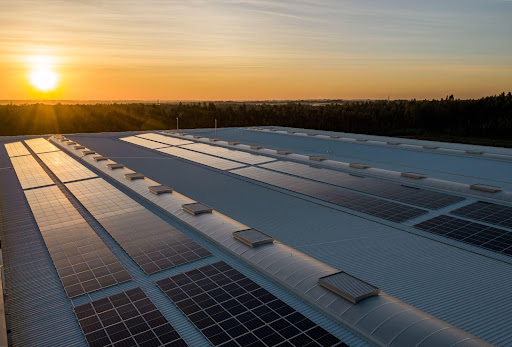How different are the brands of solar panels
Solar panels are starting to become more of an essential necessity for homeowners these days because they have some great benefits. Studies have been conducted in the United States and Europe that have proved that by switching from fossil fuel to solar power, air pollution could potentially be cut in half by 90 percent. Another benefit from having solar panels installed in Qld is that they are extremely versatile. Solar panels function best in direct sunlight but still work fine on cloudy days. Indirect sunlight won’t be as effective, but you will be able to still obtain power when it’s raining. Here are some solar power brands that homeowners prefer.
What Features Are Most Important When Choosing A Panel Manufacturer?
After you have found the solar company you want to install your solar panels, check if they are willing to listen to any of your requirements and needs. The company must send an installer to your home and do an all-over view of the installation.
The Science Of Solar Power
The science of solar power started back in the 1800s when a French physicist named Edmund Becquerel began to realize that there were certain materials that produced small electric currents from being exposed to the sunlight. The discovery of photovoltaic effect provided an operating principle for the solar cell.
Check Existing Projects
You should definitely check the installers and companies’ past solar projects to see the results. Good companies will always tell you about projects they have done and if they are currently working on any at the moment.
Team Background And Engineering Experience
The right solar panel installer will be sure to always have MCS accredited and be an active member of the Renewable Energy Assurance Limited, also known as (REAL) or Solar Trade Assurance (STA). Do all of your research on the history, quality, and reliability of the company.
Solar Cells
The most common types of solar cells are made of two different silicones that are layered together to create electron movements. The silicon is between the two outer layers covered by glass with anti-reflective coating. When light hits the cells, it then catalyzes the specific movement of the electrons, flow is then created, and movement is electricity. Light becomes wasted if it bounces off of solar panels.
Types Of Solar Panels
The technology of solar panels is advancing at a fast rate as we speak. There are plenty of new materials, techniques, and processes being discovered and tested by solar panel installers. As of right now, there are three broad categories under which solar panels can be placed, monocrystalline, polycrystalline, and thin film.
Monocrystalline
Monocrystalline solar panels are grown from a single seed crystal that is dipped into molten silicon. The seed is then drawn up and rotated, which forms the tubular ingot. These solar panels are most efficient because they are made from the highest-grade silicon, and the price for a single 100W monocrystalline solar panel ranges from $105-$170. The benefits of monocrystalline solar panels are that they offer the highest output and they last the longest. One of the biggest disappointments is that if the panel is partially covered by any debris or shade, the panel can lose function.
Polycrystalline
The polycrystalline solar panels are created by dropping the seed crystal into molten silicon, and the mixture is then poured into a square mold, which presents the panels to be square-shaped silicon. When the panels are square-shaped silicon, they will have more of an uneven or crystalline appearance on the surface. Since the process of creating these panels is less involved and less waste, that means that ultimately they are more affordable, with a single 100W panel ranging from $99-$104. The lower price makes them a better value. Polycrystalline solar is more friendly to our environment. A couple of things to think about with these panels are that they are not as efficient and don’t last as long as the monocrystalline panels.
Thin Film
Thin-film solar panels are made by layering multiple photovoltaic materials such as amorphous silicon, cadmium telluride, and copper indium gallium selenide onto a substrate. These solar panels are the most flexible compared to monocrystalline and polycrystalline solar panels and are designed to be adaptable in many different situations. The downside of these panels is that they are ranked to be the least efficient of the three. They are the most expensive, with their single 100W solar panels ranging from $160-$190, and they require more room for the same power input as the monocrystalline and polycrystalline solar panels.

